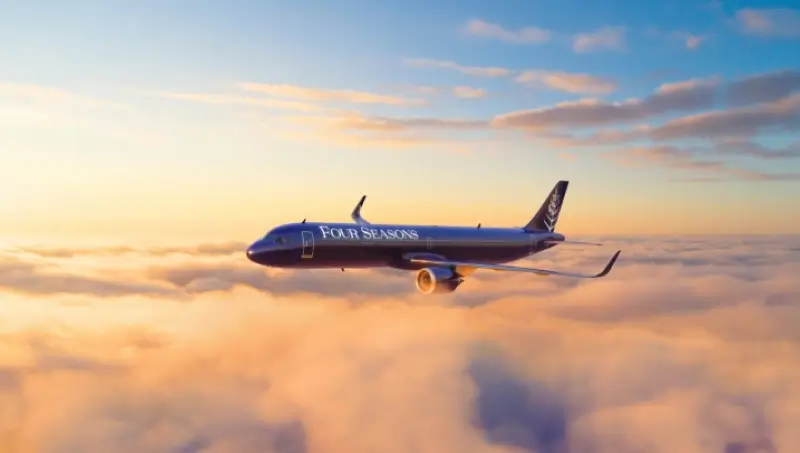
First Jet Across the Atlantic
Sep 29, 2015

The first jet to successfully cross the Atlantic Ocean was the de Havilland Comet, marking a significant milestone in aviation history. This groundbreaking flight took place in 1952, demonstrating the potential of jet technology for long-distance travel. The Comet, known for its sleek design and innovative engineering, significantly reduced travel time compared to propeller-driven aircraft. Its journey not only showcased the advancements in speed and efficiency but also paved the way for the future of commercial aviation, influencing the design and development of subsequent passenger jets that would dominate the skies in the following decades.
The achievement of the first jet aircraft crossing the Atlantic Ocean marked a significant milestone in aviation history. This monumental flight not only demonstrated the capabilities of jet technology but also paved the way for the future of commercial air travel. In this article, we will explore the details surrounding this historic event, the aircraft involved, and its impact on the aviation industry.
The Historic Flight
The first successful jet flight across the Atlantic took place on October 7, 1958. The aircraft involved was the de Havilland Comet, a pioneering jet airliner. This flight was a remarkable achievement, showcasing the advancements in aviation technology and the potential for faster air travel. The Comet flew from London to New York, covering a distance of approximately 3,000 miles in just over 8 hours.
The Aircraft: de Havilland Comet
The de Havilland Comet was the world's first commercial jetliner, introducing jet propulsion to commercial aviation. With its sleek design and advanced engineering, the Comet was capable of cruising at altitudes above 35,000 feet, allowing it to fly above much of the weather turbulence that affected propeller-driven aircraft.
| Specifications | Details |
|---|---|
| Manufacturer | de Havilland |
| First Flight | July 27, 1949 |
| Cruising Speed | 500 mph |
| Range | 3,000 miles |
| Passenger Capacity | Up to 44 passengers |
Significance of the First Jet Across the Atlantic
The successful transatlantic flight of the de Havilland Comet represented a turning point in the aviation industry. It not only demonstrated that jet aircraft were capable of long-distance flights but also established a new benchmark for air travel speed and efficiency. This flight opened up new routes and opportunities for commercial airlines, allowing them to transport passengers across the Atlantic in a fraction of the time it took traditional propeller-driven aircraft.
Impact on Commercial Aviation
The first jet flight across the Atlantic influenced the design and operation of future aircraft. Airlines began to invest in jet technology, leading to the development of more advanced models such as the Boeing 707 and the Douglas DC-8. These aircraft further increased the speed and efficiency of air travel, making international travel more accessible to the general public.
Challenges Faced
Despite the excitement surrounding the first jet flight, the de Havilland Comet faced several challenges. Early models experienced design flaws that led to a series of tragic accidents. These incidents prompted extensive investigations and modifications to improve safety standards in commercial aviation. The lessons learned from the Comet's challenges ultimately contributed to the establishment of more rigorous safety protocols that are still in place today.
Legacy of the First Jet Across the Atlantic
The legacy of the first jet flight across the Atlantic continues to resonate in the aviation industry. This achievement not only marked the dawn of the jet age but also transformed the way people travel. The introduction of jet airliners made long-distance travel faster, more efficient, and more comfortable, changing the dynamics of global connectivity.
Conclusion
The first jet across the Atlantic was a groundbreaking event that showcased the potential of jet technology in commercial aviation. The de Havilland Comet's historic flight paved the way for the development of modern air travel, influencing aircraft design and safety standards. As we look back on this remarkable achievement, it is clear that the legacy of the first jet flight continues to shape the future of aviation.
In summary, the first jet across the Atlantic not only represented an engineering triumph but also transformed the landscape of global travel. As we continue to push the boundaries of aviation technology, the spirit of innovation and exploration that characterized this historic flight remains a driving force in the industry.
Related Articles

Explore Thailand: The Best Islands to Visit for Paradise, Adventure, and Relaxation

The Ultimate Guide to the Best Islands in Thailand for Your Next Getaway

Do babies need passports? How to get a passport for a newborn

How to get a U.S. passport fast: here’s how to expedite the process

What is Mobile Passport Control: 5 reasons why you should use it

SENTRI vs. Global Entry: A detailed guide

Do you need a passport to go to the Bahamas? Let’s find out

Do you need a passport to go to Mexico? A detailed guide

Do you need a passport to go to Canada? We got the answer

Do You Need a Passport for a Cruise: An Essential Travel Guide

Booster Seat Requirements: All the Rules to Follow in Your Rental Car

What Are the World’s Most Powerful Passports, and How Does Yours Rank?

How to Take a Passport Photo at Home: A Helpful Guide

You've got to have heart! Southwest's new livery

Your opinion: Should water be free on low cost carriers?

Young women bolder than guys as solo travellers
